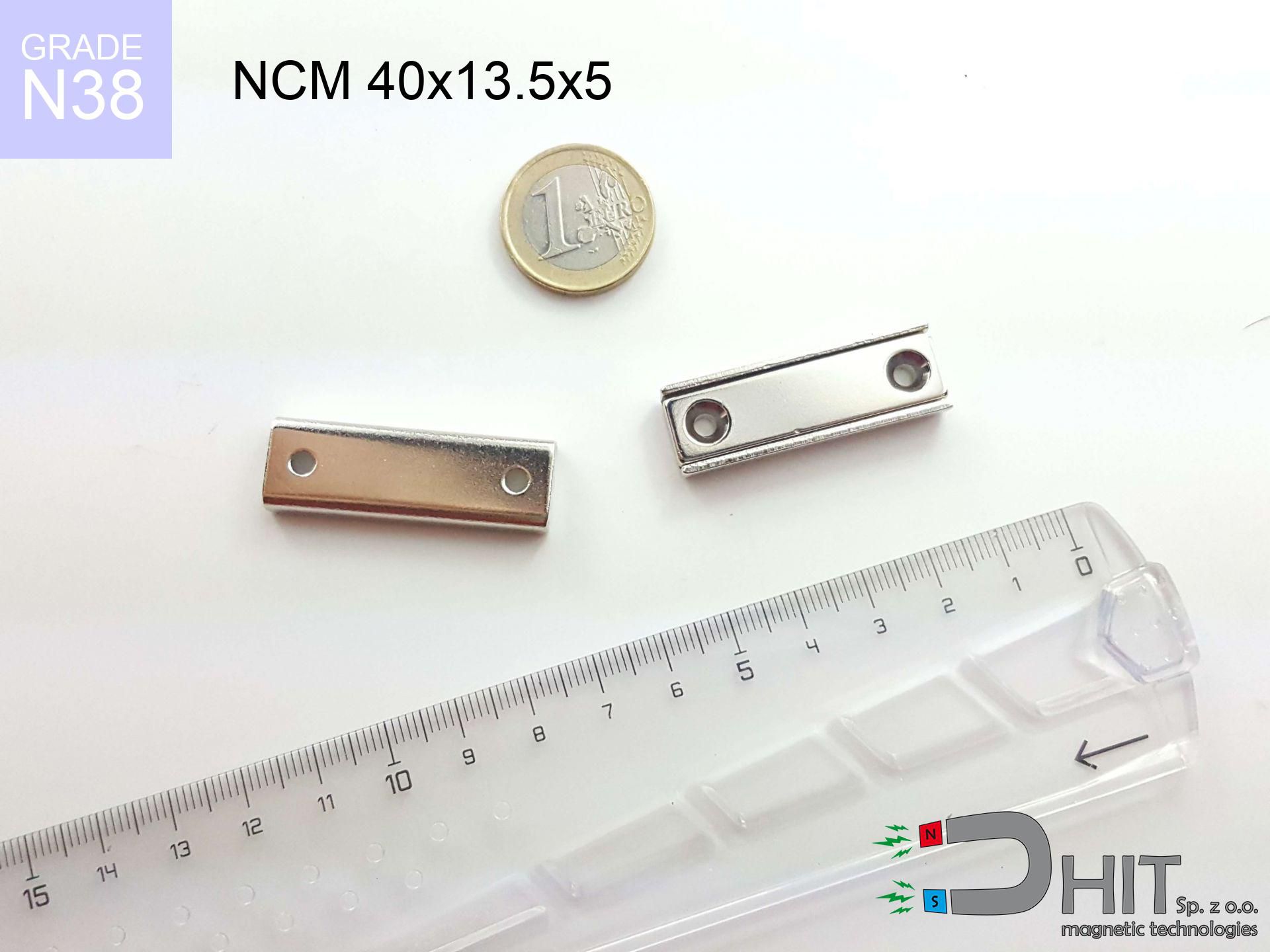XT-5 magnetyzery do silników - DIESEL + olej - XT-5 magnetizer
XT-5 magnetizer
Catalog no 060247
GTIN/EAN: 5906301812418
Weight
217 g
98.99 ZŁ with VAT / pcs + price for transport
80.48 ZŁ net + 23% VAT / pcs
bulk discounts:
Need more?
Call us
+48 888 99 98 98
or let us know using
our online form
through our site.
Parameters and structure of magnetic components can be calculated using our
online calculation tool.
Orders placed before 14:00 will be shipped the same business day.
Technical details - XT-5 magnetyzery do silników - DIESEL + olej - XT-5 magnetizer
Specification / characteristics - XT-5 magnetyzery do silników - DIESEL + olej - XT-5 magnetizer
| properties | values |
|---|---|
| Cat. no. | 060247 |
| GTIN/EAN | 5906301812418 |
| Production/Distribution | Dhit sp. z o.o. |
| Country of origin | Poland / China / Germany |
| Customs code | 85059029 |
| Weight | 217 g |
| Manufacturing Tolerance | ±1 mm |
Physical properties of sintered neodymium magnets Nd2Fe14B at 20°C
| properties | values | units |
|---|---|---|
| Vickers hardness | ≥550 | Hv |
| Density | ≥7.4 | g/cm3 |
| Curie Temperature TC | 312 - 380 | °C |
| Curie Temperature TF | 593 - 716 | °F |
| Specific resistance | 150 | μΩ⋅cm |
| Bending strength | 250 | MPa |
| Compressive strength | 1000~1100 | MPa |
| Thermal expansion parallel (∥) to orientation (M) | (3-4) x 10-6 | °C-1 |
| Thermal expansion perpendicular (⊥) to orientation (M) | -(1-3) x 10-6 | °C-1 |
| Young's modulus | 1.7 x 104 | kg/mm² |
Elemental analysis
| iron (Fe) | 64% – 68% |
| neodymium (Nd) | 29% – 32% |
| boron (B) | 1.1% – 1.2% |
| dysprosium (Dy) | 0.5% – 2.0% |
| coating (Ni-Cu-Ni) | < 0.05% |
Ecology and recycling (GPSR)
| recyclability (EoL) | 100% |
| recycled raw materials | ~10% (pre-cons) |
| carbon footprint | low / zredukowany |
| waste code (EWC) | 16 02 16 |
View also proposals
Strengths and weaknesses of neodymium magnets.
Pros
- They have constant strength, and over more than 10 years their attraction force decreases symbolically – ~1% (according to theory),
- They maintain their magnetic properties even under close interference source,
- In other words, due to the metallic surface of silver, the element is aesthetically pleasing,
- They feature high magnetic induction at the operating surface, which increases their power,
- Due to their durability and thermal resistance, neodymium magnets can operate (depending on the shape) even at high temperatures reaching 230°C or more...
- Thanks to freedom in designing and the capacity to adapt to complex applications,
- Huge importance in high-tech industry – they are used in hard drives, electric motors, medical devices, also modern systems.
- Compactness – despite small sizes they offer powerful magnetic field, making them ideal for precision applications
Limitations
- To avoid cracks under impact, we recommend using special steel holders. Such a solution protects the magnet and simultaneously improves its durability.
- Neodymium magnets lose their force under the influence of heating. As soon as 80°C is exceeded, many of them start losing their power. Therefore, we recommend our special magnets marked [AH], which maintain stability even at temperatures up to 230°C
- They rust in a humid environment - during use outdoors we suggest using waterproof magnets e.g. in rubber, plastic
- Due to limitations in realizing nuts and complex shapes in magnets, we propose using casing - magnetic mechanism.
- Potential hazard related to microscopic parts of magnets are risky, if swallowed, which becomes key in the aspect of protecting the youngest. Furthermore, small components of these products can be problematic in diagnostics medical when they are in the body.
- High unit price – neodymium magnets are more expensive than other types of magnets (e.g. ferrite), which hinders application in large quantities
Holding force characteristics
Best holding force of the magnet in ideal parameters – what affects it?
- on a block made of mild steel, optimally conducting the magnetic flux
- with a cross-section minimum 10 mm
- with an polished contact surface
- without the slightest clearance between the magnet and steel
- for force applied at a right angle (pull-off, not shear)
- at standard ambient temperature
Magnet lifting force in use – key factors
- Distance (betwixt the magnet and the metal), because even a microscopic clearance (e.g. 0.5 mm) results in a decrease in lifting capacity by up to 50% (this also applies to varnish, corrosion or debris).
- Direction of force – maximum parameter is obtained only during perpendicular pulling. The force required to slide of the magnet along the plate is standardly several times lower (approx. 1/5 of the lifting capacity).
- Wall thickness – the thinner the sheet, the weaker the hold. Magnetic flux passes through the material instead of generating force.
- Chemical composition of the base – low-carbon steel attracts best. Alloy steels reduce magnetic permeability and holding force.
- Surface quality – the more even the plate, the better the adhesion and stronger the hold. Roughness acts like micro-gaps.
- Thermal environment – heating the magnet results in weakening of induction. It is worth remembering the thermal limit for a given model.
Lifting capacity testing was conducted on a smooth plate of suitable thickness, under perpendicular forces, whereas under attempts to slide the magnet the load capacity is reduced by as much as 5 times. Moreover, even a small distance between the magnet’s surface and the plate lowers the holding force.
Warnings
Mechanical processing
Dust created during machining of magnets is combustible. Avoid drilling into magnets unless you are an expert.
Phone sensors
Remember: rare earth magnets produce a field that interferes with precision electronics. Keep a separation from your mobile, tablet, and navigation systems.
Health Danger
Patients with a heart stimulator have to keep an absolute distance from magnets. The magnetism can disrupt the functioning of the life-saving device.
Do not give to children
Only for adults. Small elements can be swallowed, leading to severe trauma. Keep away from kids and pets.
Fragile material
Despite the nickel coating, neodymium is delicate and cannot withstand shocks. Do not hit, as the magnet may shatter into sharp, dangerous pieces.
Pinching danger
Protect your hands. Two powerful magnets will join immediately with a force of several hundred kilograms, destroying everything in their path. Be careful!
Respect the power
Exercise caution. Rare earth magnets act from a long distance and snap with massive power, often quicker than you can move away.
Keep away from computers
Do not bring magnets close to a wallet, computer, or TV. The magnetic field can irreversibly ruin these devices and erase data from cards.
Thermal limits
Watch the temperature. Heating the magnet above 80 degrees Celsius will permanently weaken its properties and pulling force.
Allergic reactions
Allergy Notice: The Ni-Cu-Ni coating contains nickel. If redness appears, immediately stop handling magnets and wear gloves.



![SM 32x200 [2xM8] / N52 - magnetic separator SM 32x200 [2xM8] / N52 - magnetic separator](https://cdn3.dhit.pl/graphics/products/sm-32x200-2xm8-tus.jpg)




